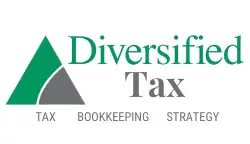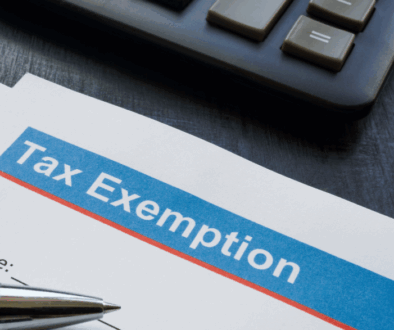How to File LLC Taxes
Table of Contents
How to File LLC Taxes
Are you a small business owner who recently formed an LLC and is now facing the daunting task of filing taxes? Don’t worry, we’ve got you covered. In this article, we will guide you through the process of filing LLC taxes, ensuring that you meet all the necessary requirements and take advantage of available deductions to maximize your savings.
Understanding LLC Taxes
LLC stands for Limited Liability Company, which is a popular business structure that combines the benefits of a corporation and a partnership. One of the advantages of forming an LLC is the flexibility it offers when it comes to how your business is taxed. LLCs have the option to be taxed as a sole proprietorship, partnership, S corporation, or C corporation. Understanding how your LLC is taxed is crucial to ensure compliance with the IRS and maximize your tax benefits.
When it comes to LLC taxes, it’s important to note that LLCs are pass-through entities. This means that the profits and losses of the business are passed through to the owners, who report them on their personal tax returns. The LLC itself does not pay federal income taxes. Instead, the owners are responsible for reporting their share of the LLC’s income and paying taxes on it.
Benefits of Filing Taxes as an LLC
Filing taxes as an LLC offers several benefits for small business owners. First and foremost, it provides limited liability protection, which means that the owners’ personal assets are generally protected from the debts and liabilities of the business. This can be a significant advantage, especially for businesses in high-risk industries.
Another benefit of filing taxes as an LLC is the flexibility it offers in terms of tax planning. As mentioned earlier, LLCs have the option to choose how they want to be taxed. This allows business owners to select the tax structure that best suits their individual circumstances and goals. For example, if you anticipate significant profits, you may choose to be taxed as an S corporation to take advantage of potential tax savings.
Additionally, LLCs enjoy certain tax deductions and credits that can help reduce their overall tax liability. By understanding the available deductions and credits, you can ensure that you’re taking full advantage of these opportunities and maximizing your tax savings.
LLC Tax Requirements and Deadlines
Filing taxes for an LLC involves meeting certain requirements and adhering to specific deadlines. The exact requirements and deadlines can vary depending on the state in which your LLC is registered, so it’s essential to familiarize yourself with the rules and regulations of your specific jurisdiction.
One of the first steps in filing LLC taxes is obtaining an Employer Identification Number (EIN) from the IRS. This unique nine-digit number is used to identify your business for tax purposes. You can apply for an EIN online through the IRS website, and it’s a relatively straightforward process.
The next requirement is determining the appropriate tax form to file. The most common tax forms for LLCs are the IRS Form 1065 and the Form 1120. The Form 1065 is used for multi-member LLCs, while the Form 1120 is for single-member LLCs. These forms are used to report the LLC’s income, deductions, and credits.
Choosing the Right Tax Structure for Your LLC
Choosing the right tax structure for your LLC is a crucial decision that can have significant implications for your tax liability. As mentioned earlier, LLCs have the option to be taxed as a sole proprietorship, partnership, S corporation, or C corporation. Each tax structure has its own advantages and disadvantages, so it’s important to carefully consider your options and consult with a tax professional if necessary.
If you’re the sole owner of your LLC, you have the option to be taxed as a sole proprietorship. This is the default tax classification for single-member LLCs. Under this structure, you report your business income and expenses on Schedule C of your personal tax return (Form 1040).
On the other hand, if your LLC has multiple owners, it’s typically taxed as a partnership by default. In this case, you’ll need to file the IRS Form 1065, which is used to report the partnership’s income, deductions, and credits. Each partner will receive a Schedule K-1, which details their share of the partnership’s income and deductions. The partners will then report this information on their personal tax returns.
Gathering Necessary Documents and Information for Tax Filing
Before you can start filing your LLC taxes, you’ll need to gather all the necessary documents and information. This includes records of your business income and expenses, bank statements, receipts, and any other relevant financial documents. It’s important to keep accurate and organized records throughout the year to ensure a smooth tax filing process.
In addition to financial documents, you’ll also need to have your EIN, as well as the names and Social Security numbers of all the owners or partners. If you have employees, you’ll need their W-2 or 1099 forms.
Having all the required documents and information ready ahead of time will save you a lot of time and stress when it comes to actually filing your LLC taxes.
Steps to File Taxes as an LLC
Now that you have all the necessary documents and information, it’s time to start the process of filing your LLC taxes. Here are the steps you need to follow:
- Determine your tax year: The tax year is the period for which you’re filing your taxes. Most LLCs follow the calendar year, which runs from January 1st to December 31st. However, you have the option to choose a fiscal year that aligns with your business operations.
- Choose the appropriate tax form: As mentioned earlier, single-member LLCs file Form 1120, while multi-member LLCs file Form 1065. Make sure you select the correct form based on your LLC’s tax structure.
- Fill out the tax form: Carefully review the instructions for the chosen tax form and provide accurate information about your LLC’s income, deductions, and credits. Double-check all the numbers and calculations to ensure accuracy.
- Pay any estimated taxes: If your LLC is expected to owe more than $1,000 in taxes for the year, you’ll likely need to make quarterly estimated tax payments. These payments help you avoid penalties and interest for underpaying your taxes.
- File the tax form: Once you’ve completed the tax form, it’s time to file it with the appropriate tax authorities. You can file electronically through the IRS e-file system or mail in a paper return. Be sure to keep a copy of your filed tax return for your records.
- Review and amend if necessary: After filing your tax return, take the time to review it carefully for any errors or omissions. If you discover a mistake or need to make changes, you can file an amended tax return using Form 1040X.
Common Mistakes to Avoid When Filing LLC Taxes
Filing taxes for an LLC can be complex, and there are several common mistakes that business owners should avoid. Here are a few of the most common errors:
- Misclassifying workers: It’s essential to correctly classify your workers as employees or independent contractors. Misclassifying workers can result in penalties and legal issues.
- Forgetting to make estimated tax payments: As mentioned earlier, if your LLC is expected to owe more than $1,000 in taxes, you’ll likely need to make quarterly estimated tax payments. Failing to make these payments can result in penalties and interest.
- Neglecting record-keeping: Accurate and organized record-keeping is crucial for proper tax filing. Keep track of all your business income and expenses, and retain copies of all relevant documents.
- Failing to take advantage of deductions and credits: LLCs are eligible for various deductions and credits that can help reduce their tax liability. Make sure you’re aware of the available tax breaks and take advantage of them to maximize your savings.
Deductions and Credits Available to LLCs
LLCs enjoy certain deductions and credits that can help reduce their overall tax liability. Here are some of the most common deductions and credits available to LLCs:
- Business expenses: LLCs can deduct ordinary and necessary business expenses, such as rent, utilities, office supplies, and employee wages.
- Home office deduction: If you use part of your home exclusively for your LLC’s business activities, you may be eligible for a home office deduction. This deduction allows you to deduct a portion of your home expenses, such as rent or mortgage interest.
- Self-employment tax deduction: As an LLC owner, you’re responsible for paying self-employment taxes, which include Social Security and Medicare taxes. However, you can deduct a portion of these taxes on your personal tax return.
- Qualified business income deduction: The qualified business income (QBI) deduction is a significant tax break for pass-through entities, including LLCs. This deduction allows eligible business owners to deduct up to 20% of their qualified business income.
Hiring a Professional vs. DIY Tax Filing for Your LLC
When it comes to filing LLC taxes, you have the option to either hire a professional tax preparer or take a DIY approach. Both options have their pros and cons, so it’s important to consider your specific circumstances and needs.
Hiring a professional tax preparer can provide peace of mind, knowing that your taxes are being handled by an expert. A tax professional can ensure that you’re taking advantage of all available deductions and credits, and they can also help you navigate any complex tax issues that may arise.
On the other hand, DIY tax filing can save you money, especially if your LLC has relatively simple tax requirements. There are many tax software programs available that make it easy to prepare and file your LLC taxes on your own. Just make sure you’re comfortable with the process and have a good understanding of your LLC’s tax obligations.
Conclusion: Simplifying LLC Tax Filing
Filing taxes for an LLC can be a complex and overwhelming task, but with the right knowledge and tools, it can be simplified. By understanding the specific tax forms, requirements, and deadlines, you can ensure that you meet all the necessary obligations and take advantage of available deductions and credits.
Remember to keep accurate and organized records throughout the year, as this will make the tax filing process much smoother. Consider consulting with a tax professional if you’re unsure about any aspect of your LLC’s tax obligations or if you want to maximize your tax savings.
By following the steps outlined in this article and avoiding common mistakes, you’ll be well-equipped to file your LLC taxes accurately and efficiently, saving you both time and money. Don’t let the daunting task of tax filing deter you from running your small business successfully. Take control of your LLC’s taxes and reap the benefits of proper tax planning and compliance.




